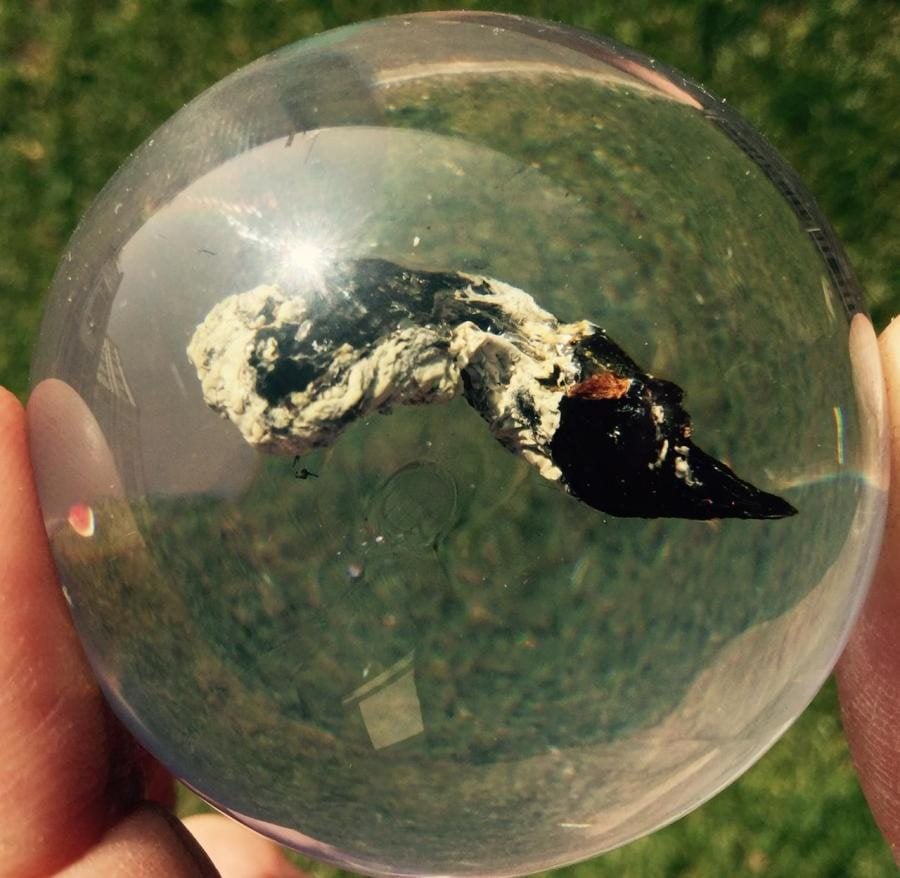
Photo: courtesy the National Poo Museum.
Let no one say the UK’s newest cultural institution, the National Poo Museum on the Isle of Wight, is without universal appeal. As they say, everybody poops—so who wouldn’t relate to a museum full of shit?
Presumably, that was part of the thinking for inventor and social entrepreneur Daniel Roberts, who came up with the idea for the museum, which he created with local artist collective Eccleston George.
The new institution’s collection is small, but instructive, with feces specimens from 18 species encapsulated in glass globes that light up when visitors press a button. A specially designed machine desiccates each sample to prepare them for display—a process that can take up to several weeks for particularly prodigious poos.
A sample from a lion.
Photo: courtesy the National Poo Museum.
In addition to easily-procured human bowel movements, there are samples from an owl, meerkat, cow, lion, and fox, among other animals. The oldest piece of poop on display is believed to be an impressive 38 million years old.
The museum, which is two hours from London off England’s South coast, will probably gross some people out (which puts it in good company among the word’s creepiest museums), but its goal is to teach visitors about what our bowel movements can tell us about our health, and that of animals. The institution also has displays about the workings of our sewer systems, and on excrement as an alternative energy source.
A selection of samples.
Photo: courtesy the National Poo Museum.
It certainly takes a much more educational approach than the UK’s other “pooseum,” the Viktor Wynd Museum of Curiosties, Fine Art & Natural History in London, known for its assortment of sniffable celebrity samples, among other assorted oddities.
Believe it or not, the National Poo Museum isn’t the first of its kind: Almost exactly one year ago, Italy debuted its Museo della Merda, dedicated to the history of human and animal waste. On a related note, a high-tech toilet museum opened in Japan in August.
A significant sample from a human baby.
Photo: courtesy the National Poo Museum.
Modern and contemporary artists have also been known to embrace the turd. Artist’s Shit (Merda d’artista), a 1961 work by Piero Manzoni which is part of the Tate’s collection, is one example. More recently, Chris Ofili is known for his glittery, elephant dung-encrusted canvases, and Wim Delvoye created a machine that digests food much like the human body, literally pooping several times a day at the Museum of Old and New Art in Tasmania. (On a less institutional level, there were even a pair of dueling poo-bedazzling artists in Brooklyn).
The National Poo Museum is making its debut at the Isle of Wight Zoo, in the appropriately named “Poo at the Zoo” exhibition. Poop is “stinky, unpleasant and sometimes dangerous stuff,” a description on the zoo’s website admitted, but “this exhibition is not to be sniffed at and will aim to change the way people think and feel about poo.”